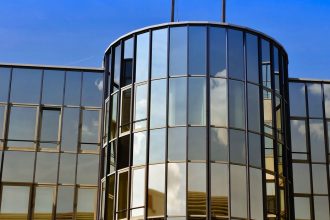As global awareness of environmental issues accelerates, the demand for sustainable practices in all sectors has surged, and the real estate industry is no exception. Building environmentally responsible spaces is no longer just a trend; it has become an essential aspect of real estate development. Among the various frameworks available to promote sustainable practices, the Leadership in Energy and Environmental Design (LEED) certification stands out as a prominent benchmark. Moreover, initiatives like the Living Building Challenge are pushing the envelope further, introducing new paradigms in green building design. This post explores how LEED and other innovative practices are transforming real estate development toward a more sustainable future.
Understanding LEED Certification
LEED certification is a globally recognized green building certification program developed by the U.S. Green Building Council (USGBC). It provides a framework for identifying and implementing practical and measurable green building design, construction, operations, and maintenance solutions.
LEED certification encompasses multiple building types, including residential, commercial, and institutional projects. It is categorized into several certification levels: Certified, Silver, Gold, and Platinum, with criteria spanning the following key areas:
- Sustainable Sites: Encouraging the development of land that minimizes environmental impact and promotes biodiversity.
- Water Efficiency: Reducing water usage and promoting the use of alternative water sources.
- Energy and Atmosphere: Promoting renewable energy use, improving energy efficiency, and reducing greenhouse gas emissions.
- Materials and Resources: Encouraging the use of sustainable building materials and waste management strategies in construction and operation.
- Indoor Environmental Quality: Enhancing the indoor environment with better air quality, natural lighting, and occupant comfort.
According to the USGBC, buildings that have achieved LEED certification can reduce energy use by 30% to 50% compared to traditional structures. This translates to significant cost savings over time, making LEED certification an economically beneficial investment.
The Living Building Challenge: A New Frontier
While LEED has set a high standard for sustainable building, the Living Building Challenge (LBC), initiated by the International Living Future Institute (ILFI), pushes the concept of sustainability to new heights. The LBC is an ambitious and aspirational building certification program that aims for buildings to operate as self-sufficient entities, producing more energy than they consume, utilizing only renewable resources, and minimizing their ecological footprint.
The LBC is based on several key performance areas known as "Petals," which include Place, Water, Energy, Health & Happiness, Materials, Equity, and Beauty. Instead of a checklist approach, it requires buildings to achieve specific performance outcomes to be certified as a "Living Building."
Initiatives and Innovative Practices
Across the globe, leading real estate developers and architects are implementing innovative practices in sustainable design that align with LEED and the Living Building Challenge. Here are a few notable examples:
-
Green Roofs and Vertical Gardens: Integrating green roofs and living walls not only improves the aesthetic appeal of buildings but also mitigates urban heat, increases biodiversity, and enhances energy efficiency. The Bosco Verticale (Vertical Forest) in Milan, Italy, features residential buildings designed with extensive green terraces that host over 9,000 trees, significantly improving air quality and urban ecology.
-
Net-Zero Energy Buildings (NZEB): These buildings produce as much energy as they consume over the course of a year through renewable resources. Projects such as the Bullitt Center in Seattle, a certified Living Building, demonstrate how energy efficiency can be achieved through passive design strategies, including daylighting, natural ventilation, and high-performance insulation.
-
Use of Sustainable Materials: Incorporating reclaimed or non-toxic materials can reduce the environmental impact of construction. The Edge, a building in Amsterdam, is renowned for its sustainable materials and innovative technology, allowing for optimal energy efficiency while utilizing sustainable sourcing practices.
-
Water Management Systems: Advanced systems for water management such as rainwater harvesting, greywater recycling, and permeable pavements are being increasingly adopted. The Khoo Teck Puat Hospital in Singapore employs a comprehensive water management strategy that includes landscaped rain gardens, reducing its overall water consumption significantly.
- Smart Building Technologies: The integration of smart technology into building management systems optimizes energy use, enhances occupant comfort, and reduces maintenance costs. Smart sensors can monitor energy use in real-time, allowing for adjustments and improving overall energy efficiency.
The Economic and Social Benefits
Investing in sustainable real estate offers considerable economic advantages. Properties with LEED certification often see a considerable increase in market value, lower operating costs, and a higher occupancy rate. They are also better positioned to attract environmentally-conscious tenants and buyers.
Beyond the economic rationale, sustainable building practices contribute positively to community well-being. Green buildings enhance the quality of life for occupants through improved indoor environments that promote health and productivity. Moreover, creating buildings with minimal ecological impact supports community resilience and environmental preservation, fostering a sustainable future.
Conclusion
As we advance into the future, the importance of sustainable practices in real estate development will only grow. Certification programs like LEED and the Living Building Challenge serve as beacons, guiding the industry toward innovative and responsible design principles. By focusing on energy efficiency, sustainable materials, and holistic environmental impact, these initiatives not only envision a better built environment but also forge a path toward a sustainable future. It’s essential for stakeholders in the real estate sector to embrace and adopt these practices, ensuring that the buildings of tomorrow are as much about people and the planet as they are about profit.
In this era of climate urgency, the collaboration between architects, developers, policymakers, and communities is more critical than ever to create a flourishing ecosystem that prioritizes sustainability. The time to act is now, and the solutions are in reach.







